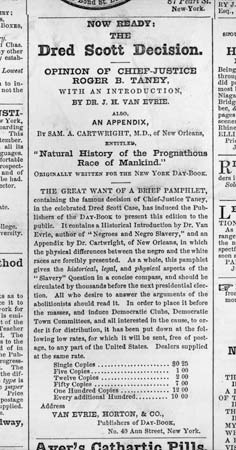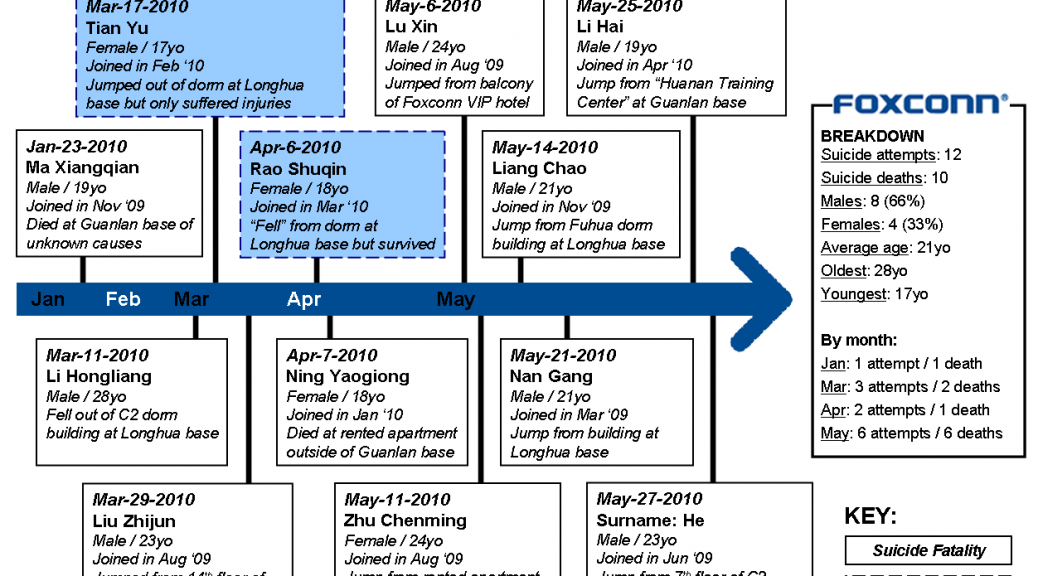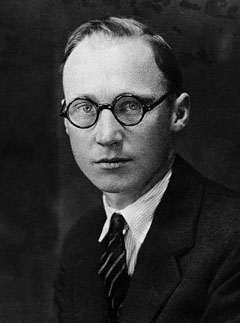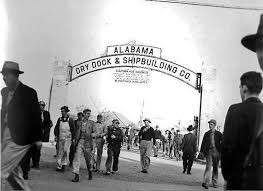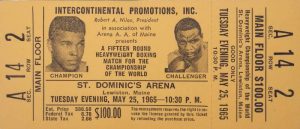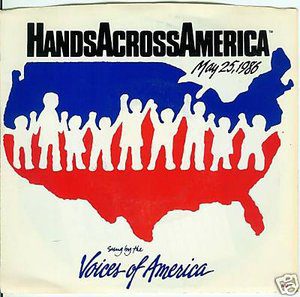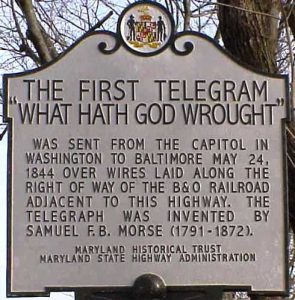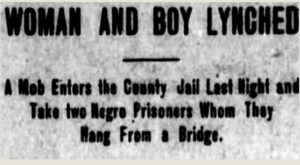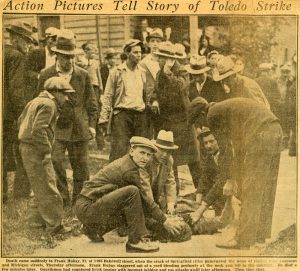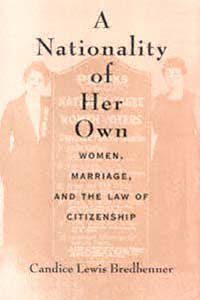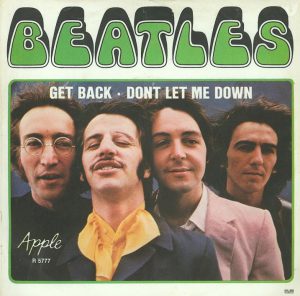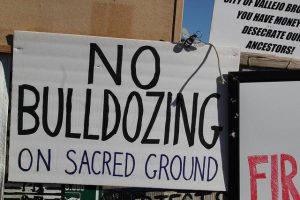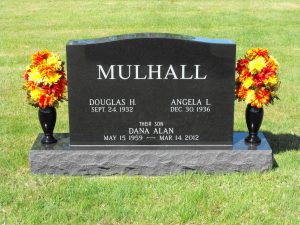Slaves Dred Harriet Scott Freed
Spoiler alert: the government will finally free the slaves Dred and Harriet Scott after decades of enslavement. That decision would never compensate them or their children for those decades.
Northwest Ordinance
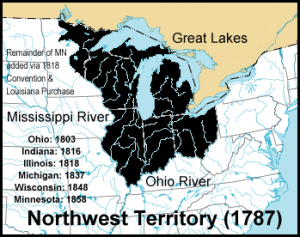 August 7, 1789: President George Washington signed the Northwest Ordinance The primary effect of the ordinance was the creation of the Northwest Territory as the first organized territory of the US out of the region south of the Great Lakes, north and west of the Ohio River, and east of the Mississippi River. One of its provisions was the prohibition of slavery in the territory which had the practical effect of establishing the Ohio River as the boundary between free and slave territory in the region between the Appalachian Mountains and the Mississippi River. This division helped set the stage for national competition over admitting free and slave states, the basis of a critical question in American politics in the 19th century until the Civil War.
August 7, 1789: President George Washington signed the Northwest Ordinance The primary effect of the ordinance was the creation of the Northwest Territory as the first organized territory of the US out of the region south of the Great Lakes, north and west of the Ohio River, and east of the Mississippi River. One of its provisions was the prohibition of slavery in the territory which had the practical effect of establishing the Ohio River as the boundary between free and slave territory in the region between the Appalachian Mountains and the Mississippi River. This division helped set the stage for national competition over admitting free and slave states, the basis of a critical question in American politics in the 19th century until the Civil War.
Around 1795: Dred Scott born a slave in Virginia. Scott’s owner, Peter Blow, moved to Alabama, but after his farm failed, move to Missouri around 1830. Blow brought his slaves, including Dred Scott.
Peter Blow died in 1832 and in 1833 US Army Surgeon Dr John Emerson purchased Scott and brought with him to Fort Armstrong in Illinois–admitted as a state on December 3, 1818.
In May 1836, the Army assigned Emerson assigned to Fort Snelling in the Wisconsin territory (a free territory as per the Missouri Compromise [1820]). Emerson took Scott.
Two weeks before Scott arrived at Fort Snelling, Congress had passed the Wisconsin Enabling Act, effectively making slavery illegal in the Wisconsin territory under three distinct statutes:
1) the act mandated that the laws of Michigan, which was a free state, govern the new territory
2) the act made the Northwest Ordinance applicable in the territory, which also prohibited slavery,
3) the act reaffirmed and supplemented the Missouri Compromise.
Thus, by taking Scott as a slave to this territory and keeping him there for two and a half years, Emerson broke the law in those three ways.
These facts provided Scott with a legitimate basis on which to claim his freedom in court, although Scott did not act on this opportunity.
Slaves Dred Harriet Scott Freed
May 1836 – April 1838
Sometime during this period, Dred Scott married Harriet Robinson, a slave owned by Major Lawrence Taliaferro, the Indian Agent stationed near Fort Snelling. Taliaferro was also a justice of the peace, and in that capacity he performed a formal wedding ceremony for his slave and her new husband.
This event was extraordinary and significant. While it not give Dred Scott a new claim to freedom, the formal marriage provided another factual basis for his claim that he became free while he lived at Fort Snelling. Under the laws of the Southern states, a slave could never be legally married. Slave couples, of course, “married” each other throughout the South. Often a master performed a ceremony for his slaves. Sometimes white clergymen or slave preachers consecrated slave unions. Some slaves simply announced they were married or went to their masters to ask permission to live as a couple. Often slave communities developed their own ceremonies exchanging vows such as “until death or master do part.” Slaves understood the precarious nature of their personal lives.
From the Chicago-Kent Law Review
No Southern state allowed slaves to be married under the eyes of the law for three important reasons.
First, as law students learn in family law, a marriage is a contract between three parties—the two spouses and the state. Slaves could never have a legal marriage because American slaves could not be parties to contracts. No American slave state allowed slaves to make contracts or in any other way perform legally binding acts, including marriages.
Second, a legal recognition of slave marriages would have undermined the property interest of masters. Such marriages might have limited the right of the master to sell one of the partners.
Finally, recognition of slave marriages might have led slaves to claim other rights. The legal right to marry implies the right to raise your own children, and under common law a husband or wife cannot be compelled to testify against his or her spouse in a prosecution. A husband at common law had a duty to protect is wife from assaults from others, but slaves could never protect their wives from the assaults of their masters or overseers.
Slaves Dred Harriet Scott Freed
October 1837
The Army transferred Dr Emerson to Jefferson Barracks in St. Louis. Because the trip down the Mississippi at that time of year was dangerous, Emerson left Dred and Harriet Scott at Fort Snelling, Wisconsin Territory where he rented them to other people. This fact could have significantly buttressed their subsequent claims to freedom. By leaving the Scotts at Fort Snelling and hiring them out at a profit, Emerson was in fact bringing the system of slavery itself into the Wisconsin Territory, a free territory. If a master worked a slave or hired a slave out, then the institution of slavery itself would have been in a free territory and the slave might legitimately claim their freedom.
While at the military post, Emerson might have claimed an exemption, but once he left and hired out the Scotts it was an unequivocal violation of the Missouri Compromise, the Northwest Ordinance, and the Wisconsin Enabling Act.
Slaves Dred Harriet Scott Freed
November 1837
The Army sent Dr. Emerson to Fort Jesup in Louisiana. The Scotts remained in Wisconsin Territory.
On February 6, 1838, Dr Emerson married Eliza Irene Sanford and sent for the Scotts.
Slaves Dred Harriet Scott Freed
April 1838
The Scotts joined Dr & Mrs Emerson in Louisiana. When the Scotts arrived in Louisiana they might have sued for their freedom in that state. For more than twenty years Louisiana courts had upheld the freedom claims of slaves who had lived in free jurisdictions. Had the Scotts claimed their freedom in Louisiana in 1838, theirs would have been an open-and-shut case. But, once again, they did not seek their freedom. It is likely that they simply had no knowledge that the Louisiana courts routinely freed slaves who had lived in free jurisdictions.
Slaves Dred Harriet Scott Freed
October 1838
The Army transferred Dr Emerson back to Ft Snelling (Wisconsin). During the trip on a Mississippi River steamboat that was north of the state of Missouri—that is, in territory made free by the Missouri Compromise—Harriet Scott gave birth to her first child, who she named Eliza after Mrs. Emerson. Thus, Eliza Scott was born on a boat in the Mississippi River, surrounded on one side by the free state of Illinois and on the other side by the free territory of Wisconsin. Under both state and federal law Eliza was born “free.”
Slaves Dred Harriet Scott Freed
May 1840
The Army sent Dr. Emerson to Florida to serve in the Seminole War. On his way there he left his wife and the Scotts in St. Louis.
Slaves Dred Harriet Scott Freed
August 1842
The Army discharged Emerson, and he returned to St. Louis. He later moved to Iowa, a free territory, but left the Scott family in St. Louis where Dred and Harriet were hired out to various people.
Slaves Dred Harriet Scott Freed
December 1843
The forty-year-old Dr John Emerson died suddenly. His widow, Irene, inherited his estate. For the next three years, the Scotts worked as hired slaves with the rent going to Irene Emerson.
Slaves Dred Harriet Scott Freed
1846
In February, 1846, Dred Scott tried to purchase freedom for himself and his family, but Irene Emerson refused to sell Scott to himself.
April 6, 1846: Scott filed suit for his freedom and that of his wife and two children. Sometime after his return to St. Louis, Scott had renewed contact with the sons of Peter Blow, his former master. The Blows began to provide financial aid for Scott’s litigation.
Scott’s lawyers assumed his case was an easy one to win. In 1824, in Winny v. Whitesides, the Missouri Supreme Court freed a slave who had been taken to Illinois. In the next thirteen years the Missouri court heard another ten cases on this issue, always deciding that slaves gained their freedom by either working in a free jurisdiction or living there long enough to be considered a resident.
During this period Missouri was one of the most liberal Southern states on this question. It was not, however, the only slave state to reach this result. Courts in Kentucky, Louisiana, and Mississippi also upheld the freedom of slaves who had lived in a free state or territory.
Slaves Dred Harriet Scott Freed
June 30, 1847
In a trial before the St. Louis Circuit Court Scott lost because of a technicality—he was suing Irene Emerson for his freedom but he had no witness who could prove she now owned him.
Slaves Dred Harriet Scott Freed
March 17, 1848
Before the next trial took place, Irene Emerson had the sheriff of St. Louis County take charge of the Scott family. He was responsible for their hiring out, and maintained the wages until such a time as the outcome of the freedom suit was determined (custody of the Scott family would remain with the St. Louis County sheriff until March 18, 1857).
In late 1849 or early 1850, Irene Emerson left Missouri for Springfield, Massachusetts. In 1850 she married Dr. Calvin C. Chaffee, a Springfield physician with antislavery leanings who later became a Republican congressman. Although no longer in Missouri, Irene Emerson remained the defendant in Dred Scott’s freedom suit before the Missouri state courts. Her brother, a prosperous New York merchant with strong personal and professional ties to St. Louis, continued to act on her behalf in defending the case and would become the named defendant in the federal case.
Slaves Dred Harriet Scott Freed
January 12, 1850
The judge in the St. Louis Circuit Court charged the jury that Scott’s residence in free jurisdictions would destroy his status as a slave, and if the jurors determined he had in fact lived in a free state or territory, they should find him free. The jury sided with Scott and his family.
The jury of twelve white men in Missouri (the only people eligible to be on a jury) concluded that Scott’s residence in a free state and a free territory had made him free. This result was consistent with Missouri precedents dating from 1824. Irene Emerson, reluctant to lose her four slaves, appealed this decision to the Missouri Supreme Court.
Slaves Dred Harriet Scott Freed
March 22, 1852
In Scott v. Emerson, the Missouri Supreme Court reversed the lower court and declared that Scott was still a slave. The decision was political. The court decided the case not on the basis of legal precedent, but because of popular prejudice. Chief Justice William Scott stated:
Times are not now as they were when the former decisions on this subject were made. Since then not only individuals but States have been possessed with a dark and fell spirit in relation to slavery, whose gratification is sought in the pursuit of measures, whose inevitable consequence must be the overthrow and destruction of our government. Under such circumstances it does not behoove the State of Missouri to show the least countenance to any measure which might gratify this spirit. She is willing to assume her full responsibility for the existence of slavery within her limits, nor does she seek to share or divide it with others.
Thus, Chief Justice Scott overturned twenty-eight years of Missouri precedents.
Slaves Dred Harriet Scott Freed
1853
Scott’s fourth lawyer, Vermont-born Roswell Field, took over the case. Field conceived a rather brilliant strategy: to bring the case into federal court under diversity jurisdiction. Article III of the United States Constitution allows citizens of one state to sue citizens of another state in federal court. Field argued that Scott, as a free person, was a “citizen” of Missouri and thus entitled to sue John Sanford, a citizen of New York, in federal court.
Field’s position assumed two points that were as yet unproved: first, that Scott was indeed free, and second, that if free, he was also a citizen of Missouri.
Although a citizen of New York, John Sanford continued to exert control over the Scotts. He also continued to defend the case, because the Scott family constituted a valuable asset. Since early in the litigation, Scott had been in the immediate custody of the sheriff of St. Louis County. The sheriff had been renting Scott and his family out, collecting the rent, and holding the money in escrow until the case was finally settled. By this time a tidy sum of money had accumulated. The winner of the case—either Scott or his owner—would get this money once the case was finally settled.
Slaves Dred Harriet Scott Freed
1854
In May 1854 , Federal Judge Robert William Wells told the jury that Scott’s status was to be determined by Missouri law. Since the Missouri Supreme Court had already decided that Scott was a slave, the federal jury upheld his status as a slave.
If an Illinois court had previously declared Scott free, then the result would have been different. Judge Wells might then have held that, under the Full Faith and Credit Clause of the Constitution, that Missouri was obligated to recognize the judicial proceedings that had emancipated Scott. But, no such proceeding had in fact ever taken place in Illinois or in the Wisconsin Territory. Thus, Scott and his family remained slaves.
The next stop in Dred Scott’s legal odyssey was the United States Supreme Court. An appeal would be more expensive than the Blows, by now Scott’s main financial patrons, could afford. Moreover, this was not a case that Scott’s lawyer, Rosewell Field, was able to finance or even argue. However, Montgomery Blair, a Washington lawyer well connected to Missouri politics, agreed to take the case for free.
In December 1854 , Scott appealed to the Supreme Court alleging that Judge Wells had made an error in charging the jury that Dred Scott was not entitled to his freedom. The appeal reached Washington too late for the 1854 term, so the Supreme Court held the case over for the December 1855 term and finally heard arguments in February 1856.
Slaves Dred Harriet Scott Freed
1856
In May 1856, the Supreme Court postponed a decision and scheduled reargument for the following term.
In December 1856, the Court heard arguments and also asked questions about the constitutionality of the Missouri Compromise. It was an election year and perhaps for political reasons, the Court declined to render a decision in the spring of 1857.
Slaves Dred Harriet Scott Freed
1857
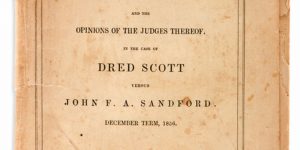 February, 1857 : Irene Emerson’s abolitionist second husband, Dr. Calvin Chaffee, a Massachusetts congressman, found out his wife owned the most famous slave in America. Unable to intervene in the case at that point, Chaffee suffered “disparaging commentary” in newspapers nationwide and on the floor of Congress because of the seeming hypocrisy of his ardent abolitionist stance while being a slave owner. Chaffee immediately transferred ownership of the Scott family to Taylor Blow in St. Louis; Missouri law only allowed a citizen of the state to emancipate a slave there. Irene Emerson Chaffee agreed to this ownership transfer on the condition that she receive the wages the Scott family earned over the last seven years. The wages amounted to about $750. There is speculation that, in 1857, Dred and Harriet Scott were worth about $350 each on the slave market. Had Irene Emerson Chaffee sold them, her return may have been less than the total of their wages earned.
February, 1857 : Irene Emerson’s abolitionist second husband, Dr. Calvin Chaffee, a Massachusetts congressman, found out his wife owned the most famous slave in America. Unable to intervene in the case at that point, Chaffee suffered “disparaging commentary” in newspapers nationwide and on the floor of Congress because of the seeming hypocrisy of his ardent abolitionist stance while being a slave owner. Chaffee immediately transferred ownership of the Scott family to Taylor Blow in St. Louis; Missouri law only allowed a citizen of the state to emancipate a slave there. Irene Emerson Chaffee agreed to this ownership transfer on the condition that she receive the wages the Scott family earned over the last seven years. The wages amounted to about $750. There is speculation that, in 1857, Dred and Harriet Scott were worth about $350 each on the slave market. Had Irene Emerson Chaffee sold them, her return may have been less than the total of their wages earned.
Slaves Dred Harriet Scott Freed
Supreme Court Keeps Scotts Slaves
March 6, 1857 : Chief Justice Taney delivered the majority opinion of the Court.
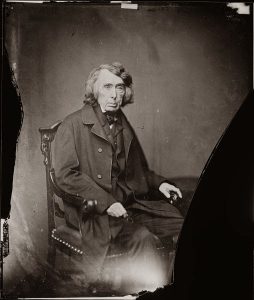 It held that Scott was not a “citizen of a state” and therefore was unable to bring suit in federal court. According to Taney, the authors of the Constitution had viewed all blacks as “beings of an inferior order, and altogether unfit to associate with the white race, either in social or political relations, and so far inferior that they had no rights which the white man was bound to respect.”
It held that Scott was not a “citizen of a state” and therefore was unable to bring suit in federal court. According to Taney, the authors of the Constitution had viewed all blacks as “beings of an inferior order, and altogether unfit to associate with the white race, either in social or political relations, and so far inferior that they had no rights which the white man was bound to respect.”
If the Court were to grant Scott’s petition, It would give to persons of the negro race, …the right to enter every other State whenever they pleased, …to sojourn there as long as they pleased, to go where they pleased …the full liberty of speech in public and in private upon all subjects upon which its own citizens might speak; to hold public meetings upon political affairs, and to keep and carry arms wherever they went.
As far as Scott’s previous residence in both a free state and a free territory, Justice Taney deferred to the Missouri State court’s: “…we are satisfied, upon a careful examination of all the cases decided in the State courts of Missouri referred to, that it is now firmly settled by the decisions of the highest court in the State, that Scott and his family upon their return were not free, but were, by the laws of Missouri, the property of the defendant; and that the Circuit Court of the United States had no jurisdiction, when, by the laws of the State, the plaintiff was a slave, and not a citizen.”
Slaves Dred Harriet Scott Freed
Slaves Dred Harriet Scott Freed
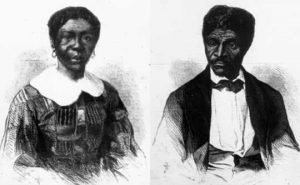 On May 26, 1857, Dred and Harriet Scott appeared in the St. Louis Circuit Court and were formally freed; Judge Alexander Hamilton approved the papers. Dred Scott took a job as a porter at Barnum’s Hotel at Second and Walnut streets in St. Louis; he became a sort of celebrity there. The family lived off Carr Street in the city, where Harriet took in laundry, which Scott delivered when he was not working at the hotel.
On May 26, 1857, Dred and Harriet Scott appeared in the St. Louis Circuit Court and were formally freed; Judge Alexander Hamilton approved the papers. Dred Scott took a job as a porter at Barnum’s Hotel at Second and Walnut streets in St. Louis; he became a sort of celebrity there. The family lived off Carr Street in the city, where Harriet took in laundry, which Scott delivered when he was not working at the hotel.
June 16, 1858 : with the recent Dred Scott Supreme Court decision in mind, and accepting the Illinois Republican Party’s nomination as that state’s United States senator, Abraham Lincoln delivered his “House divided” speech. Part of his speech included:
A house divided against itself cannot stand. I believe this government cannot endure, permanently, half slave and half free. I do not expect the Union to be dissolved — I do not expect the house to fall — but I do expect it will cease to be divided. It will become all one thing or all the other. Either the opponents of slavery will arrest the further spread of it, and place it where the public mind shall rest in the belief that it is in the course of ultimate extinction; or its advocates will push it forward, till it shall become alike lawful in all the States, old as well as new — North as well as South.
Slaves Dred Harriet Scott Freed
Dred Scott dies
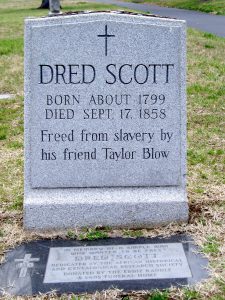 Scott did not live to enjoy his freedom very long, On September 17, 1858 he died of tuberculosis. He had been free less than two years.
Scott did not live to enjoy his freedom very long, On September 17, 1858 he died of tuberculosis. He had been free less than two years.
Slaves Dred Harriet Scott Freed
Harriet Scott
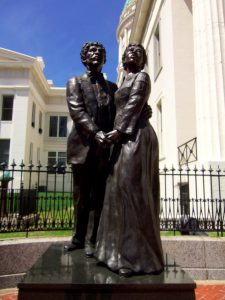 June 17, 1876: Harriet Scott died at the home of her daughter Lizzie and son-in-law’s Wilson Madison. She was buried June 20, 1876, in Section C of Greenwood Cemetery in St. Louis County.
June 17, 1876: Harriet Scott died at the home of her daughter Lizzie and son-in-law’s Wilson Madison. She was buried June 20, 1876, in Section C of Greenwood Cemetery in St. Louis County.
Slaves Dred Harriet Scott Freed
Freed,

